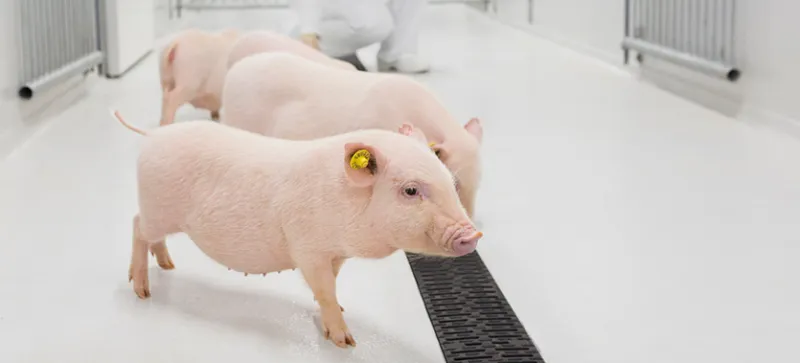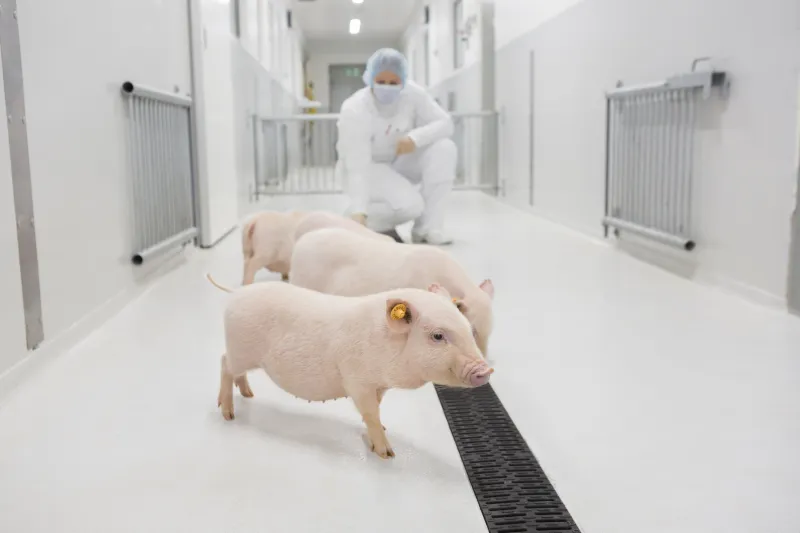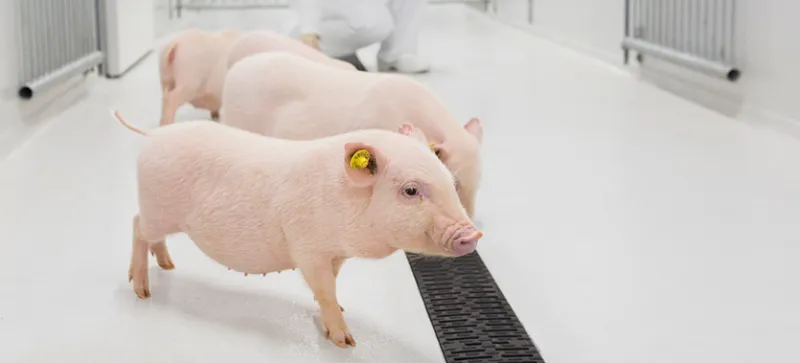
Results (95)

















Devices, Disease models, Safety pharmacology
Implantation of telemetric blood pressure transmitters in Göttingen Minipigs: Validation of 24-h systemic blood pressure and heart rate monitoring and influence of anaesthesia
Doi: 10.1016/j.vascn.2022.107168









Disease models
Anterograde Tracing From the Göttingen Minipig Motor and Prefrontal Cortex Displays a Topographic Subthalamic and Striatal Axonal Termination Pattern Comparable to Previous Findings in Primates
Orlowski, et al. Nov 26, 2021
Doi: 10.3389/fncir.2021.716145

Disease models
Plant Recombinant Human Collagen Type I Hydrogels for Corneal Regeneration
Doi: 10.1007/s40883-021-00220-3

Xenotransplantation
Virological and Parasitological Characterization of Mini-LEWE Minipigs Using Improved Screening Methods and an Overview of Data on Various Minipig Breeds
Doi: 10.3390/microorganisms9122617

Devices, Disease models, Safety pharmacology
A 3-D Finite-Element Minipig Model to Assess Brain Biomechanical Responses to Blast Exposure
al. Nov 8, 2021
Doi: 10.3389/fbioe.2021.757755

Devices
Low kV Computed Tomography of Parenchymal Abdominal Organs—A Systematic Animal Study of Different Contrast Media Injection Protocols
Doi: 10.3390/tomography7040069

Disease models
A systematic review of porcine models in translational pain research
Doi: 10.1038/s41684-021-00862-4.

Disease models
Anatomy and histology of the Göttingen minipig adenohypophysis with special emphasis on the polypeptide hormones: GH, PRL, and ACTH
Doi: 10.1007/s00429-021-02337-1

In vitro pharmacology
The effect of fatty diacid acylation of human PYY3-36 on Y2 receptor potency and half-life in minipigs
Doi: 10.1038/s41598-021-00654-3

Disease models
Safety and efficacy of sFilm-FS, a novel biodegradable fibrin sealant, in Göttingen minipigs
Doi: 10.1293/tox.2021-0030

Disease models
Unraveling the Metabolic Derangements Occurring in Noninfarcted Areas of Pig Hearts With Chronic Heart Failure
Doi: 10.3389/fcvm.2021.753470

Disease models, Safety pharmacology
[68Ga]Ga-NODAGA-E[(cRGDyK)]2 Angiogenesis PET/MR in a Porcine Model of Chronic Myocardial Infarction
Doi: 10.3390/diagnostics11101807

Disease models, Safety pharmacology
Safety Testing of an Antisense Oligonucleotide Intended for Pediatric Indications in the Juvenile Göttingen Minipig, including an Evaluation of the Ontogeny of Key Nucleases
Doi: 10.3390/13091442



Disease models
Effects of captopril against radiation injuries in the Göttingen minipig model of hematopoietic-acute radiation syndrome
Doi: 10.1371/journal.pone.0256208

Safety pharmacology, Toxicology
Species selection for nonclinical safety assessment of drug candidates: Examples of current industry practice
Doi: 10.1016/j.yrtph.2021.105029

Guidelines, Toxicology
Nervous System Sampling for General Toxicity and Neurotoxicity Studies in the Laboratory Minipig With Emphasis on the Göttingen Minipig
Doi: 10.1177/01926233211019941

Disease models, Genetically altered models
In vivo evidence that SORL1, encoding the endosomal recycling receptor SORLA, can function as a causal gene in Alzheimer’s Disease
Doi: 10.1101/2021.07.13.452149

In vitro pharmacology, Toxicology
In Vitro and In Vivo Analysis of Ochratoxin A-Derived Glucuronides and Mercapturic Acids as Biomarkers of Exposure
Doi: 10.3390/toxins13080587

Disease models
Investigating the Multi-Faceted Nature of Radiation-Induced Coagulopathies in a Göttingen Minipig Model of Hematopoietic Acute Radiation Syndrome
Doi: 10.1667/RADE-20-00073.1.

Disease models, In vitro pharmacology
Whole blood gene expression within days after total-body irradiation predicts long term survival in Gottingen minipigs
Doi: 10.1038/s41598-021-95120-5

Disease models, In vitro pharmacology
Anatomy and histology of the Göttingen minipig adenohypophysis with special emphasis on the polypeptide hormones: GH, PRL, and ACTH
Doi: 10.1007/s00429-021-02337-1

Disease models, Genetically altered models
The CRISPR/Cas9 Minipig—A Transgenic Minipig to Produce Specific Mutations in Designated Tissues
Doi: 10.3390/cancers13123024

Disease models, Toxicology
Utility of Göttingen minipigs for the prediction of human pharmacokinetic profiles after intravenous drug administration
Doi: 10.1016/j.dmpk.2021.100408

Disease models
Preclinical Development and Validation of ASP5354: A Near-Infrared Fluorescent Agent for Intraoperative Ureter Visualization
Doi: 10.1007/s11307-021-01613-0

Disease models
Energy-Dependent Endocytosis Is Responsible for Skin Penetration of Formulations Based on a Combination of Indomethacin Nanoparticles and l-Menthol in Rat and Göttingen Minipig
Doi: 10.3390/ijms22105137

Disease models
Post-Myocardial Infarction Heart Failure in Closed-chest Coronary Occlusion/Reperfusion Model in Göttingen Minipigs and Landrace Pigs
Doi: 10.3791/61901

Disease models
Obesity Development and Signs of Metabolic Abnormalities in Young Göttingen Minipigs Consuming Energy Dense Diets Varying in Carbohydrate Quality
Doi: 10.3390/nu13051560

Disease models, Toxicology
Soman-induced toxicity, cholinesterase inhibition and neuropathology in adult male Göttingen minipigs
Doi: 10.1016/j.toxrep.2021.04.005

Disease models
Hepatic blood flow in adult Göttingen minipigs and pre-pubertal Danish Landrace x Yorkshire pigs
Doi: 10.1177/00236772211000370

Disease models, In vitro pharmacology, Toxicology
Hepatic Cytochrome P450 Abundance and Activity in the Developing and Adult Göttingen Minipig: Pivotal Data for PBPK Modeling
Doi: 10.3389/fphar.2021.665644

